Sweet Corn IPM Newsletter No. 3- July 16, 2021
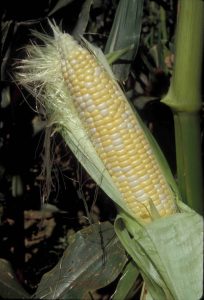
Sweet Corn IPM Newsletter No. 3- July 16, 2021
Click on photos to enlarge.
CORN EARWORM, FALL ARMYWORM, CORN BORER THREAT
Early Silking Fields May Require Protection
SITUATION
Some very early corn is being harvested in the southern part of the state, and it looks as though the season will be in full swing in just a couple of weeks. Relief from very dry weather was welcomed in much of the state this week, but as is often the case this time of year, it brought with it our first significant corn pest infestations. Our traps caught all of the three major corn pests this week, including European corn borer, corn earworm and fall army worm.
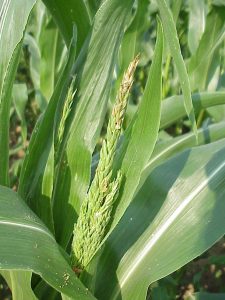
European corn borer:
Larval feeding injury was not over the 15% control threshold for pre-tassel corn in any of the scouting locations this week although some feeding activity was observed in most fields. With moths still flying in the fields, more injury can be expected in the coming days. For silking fields sprays may be based on the number of moths caught in pheromone traps. If more than five moths are caught during a week in a silking field, a spray is recommended. European corn borer moth trap counts were over the spray threshold in Auburn, Monmouth, Sabattus and Wells this week, but the Auburn and Sabattus sites are also under a spray schedule for corn earworm, which should provide control of corn borer.
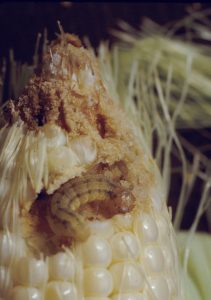
Corn earworm:
We were still setting up earworm traps at some sites this week, but we did have captures from traps set up last week. As a result, silking fields in Auburn, Cape Elizabeth and Sabattus should be on a 6-day spray interval to protect against corn earworm. Other sites should consider protecting silking corn, if they have not yet been sprayed, to cover them until we get data from more sites.
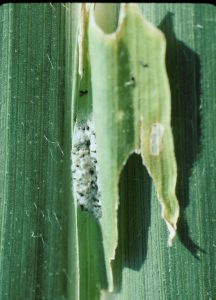
Fall armyworm:
We caught fall armyworm moths in Auburn, Cape Elizabeth, New Gloucester, and Sabattus this week, and counts were over the threshold of 3 moths per week in silking corn in Auburn and New Gloucester, although the Auburn site is also on a spray schedule for corn earworm which should provide protection against fall armyworm. We have not yet found any feeding damage in the field, but this can be expected in the coming weeks with the arrival of the moths.
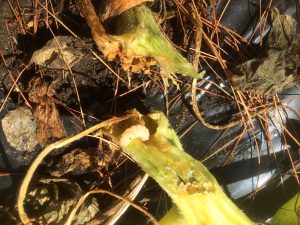
Squash vine borer damage is being reported in some southern fields. Growers should be on the lookout for squash vine borer feeding at the base of the plants and/or wilting vines now, and apply appropriate control if damage is found. Sprays should be targeted for the base of the plants where the moths lay their eggs. Squash vine borer moths are black and orange and resemble wasps. See the 2020-2021 New England Vegetable Management Guide for control options.

Spotted wing drosophila:
The first capture of spotted wing drosophila occurred this week in berry fields in coastal Maine. These small fruit flies can cause serious fruit losses in late strawberries, raspberries, blueberries and other soft fruits. This pest has already reached damaging numbers in southern New England, which is early, based on what we’ve seen in the past few years. For more information visit our website
Sincerely,
David T. Handley
Vegetable & Small Fruit Specialist
Highmoor Farm Pest Mgmt. Unit
P.O. Box 179 17 Godfrey Drive
52 U.S. Route 202 Orono, ME 04473
Monmouth, ME 04259
207.933.2100 1.800.287.0279
| Location | CEW
Moths |
ECB
Moths |
FAW
Moths |
% Feeding
Damage |
Recommendations / Comments |
|---|---|---|---|---|---|
| Auburn | 2 | 5 | 3 | 2% | 6-day spray interval for silking corn |
| Biddeford | 0 | 1 | 0 | 2% | No spray recommended |
| Bowdoinham | 0 | 1 | 0 | 4% | No spray recommended |
| Cape Elizabeth | 3 | 0 | 1 | 1% | 6-day spray interval for silking corn |
| Dayton I | 0 | 0 | 0 | 1% | No spray recommended |
| Dayton II | 0 | 0 | 0 | 0% | No spray recommended |
| Farmington | * | * | * | 3% | No spray recommended |
| Lewiston | 0 | 0 | 0 | 2% | No spray recommended |
| Monmouth | 0 | 13 | 0 | 2% | No spray recommended (no silking corn) |
| New Gloucester | 1 | * | 4 | 0% | One spray for FAW on silking corn |
| Oxford | * | * | * | 8% | No spray recommended |
| Sabattus | 2 | 5 | 1 | 6% | 6-day spray interval for silking corn |
| Wayne | * | * | * | 1% | No spray recommended |
| Wells I | 1 | 5 | 0 | 1% | One spray for ECB on silking corn |
| Wells II | 0 | 2 | 0 | 0% | No spray recommended |
*Traps just set up-no data yet
CEW: Corn earworm (Only fresh silking corn should be sprayed for this insect.)
ECB: European corn borer
FAW: Fall armyworm
| Moths caught per week | Moths caught per night | Spray interval |
|---|---|---|
| 0.0 to 1.4 | 0.0 to 0.2 | No spray |
| 1.5 to 3.5 | 0.3 to 0.5 | Spray every 6 days |
| 3.6 to 7.0 | 0.6 to 1.0 | Spray every 5 days |
| 7.1 to 91 | 1.1 to 13.0 | Spray every 4 days |
| More than 91 | More than 13 | Spray every 3 days |
Thresholds apply only to corn with exposed fresh silk. Lengthen spray intervals by one day if maximum daily temperature is less than 80°F.
European Corn Borer Thresholds
Whorl stage: 30% or more of plants scouted show injury.
Pre-tassel-silk: 15% or more of plants scouted show injury.
Silk: 5 or more moths caught in pheromone traps in one week.
IPM Web Pages:
Where brand names or company names are used, it is for the reader’s information. No endorsement is implied nor is any discrimination intended against other products with similar ingredients. Always consult product labels for rates, application instructions and safety precautions. Users of these products assume all associated risks.
The University of Maine is an equal opportunity/affirmative action institution.
